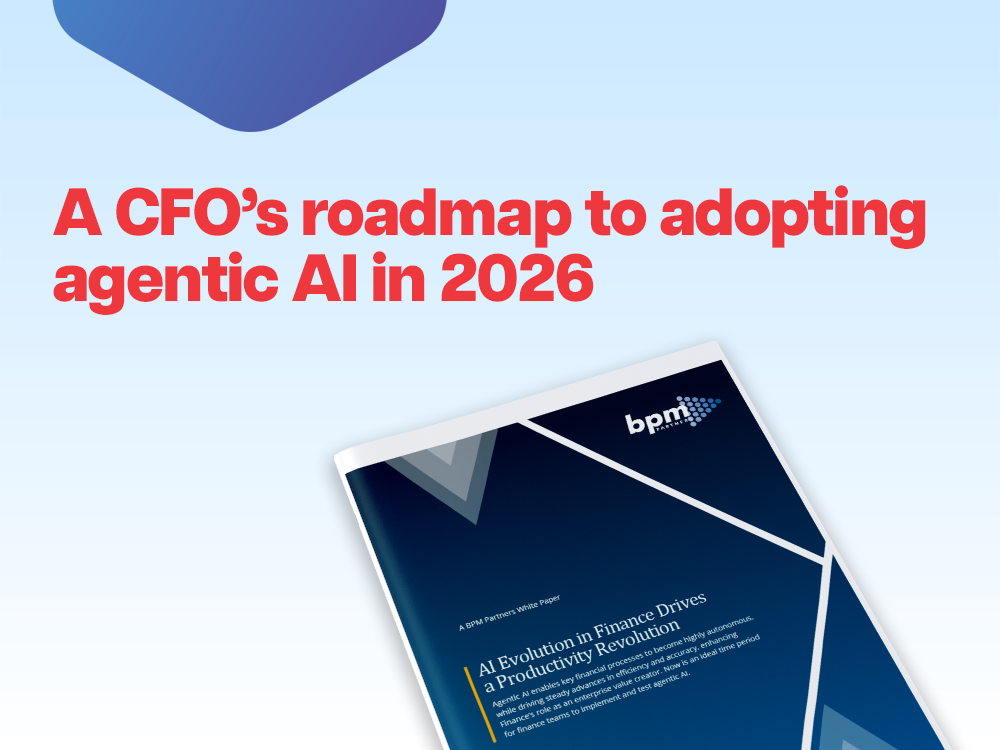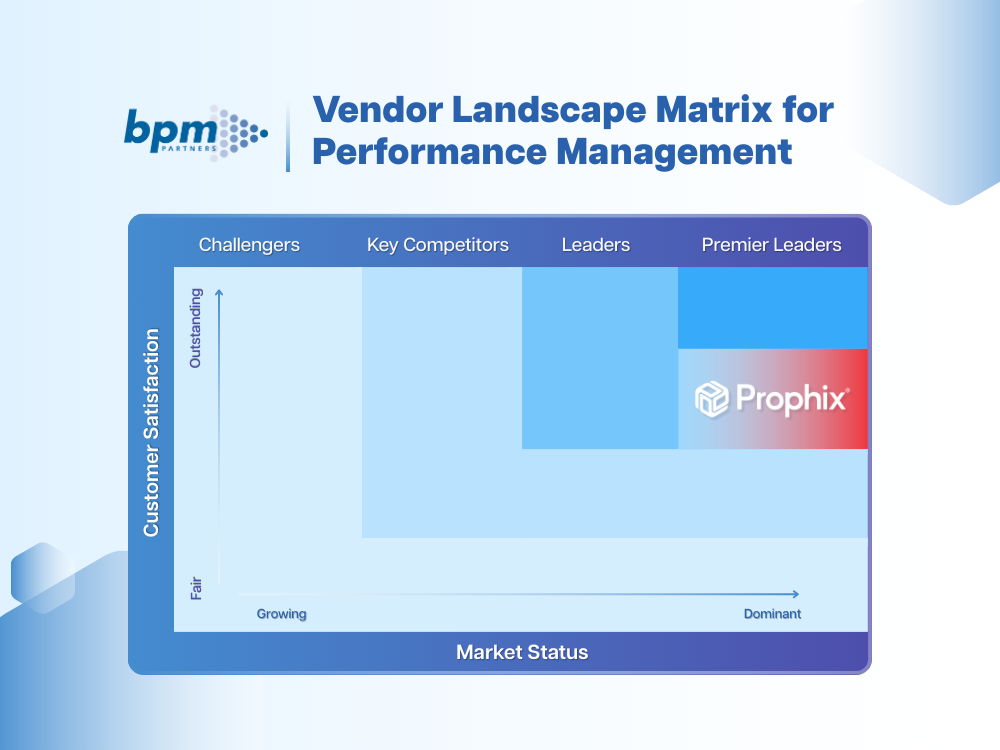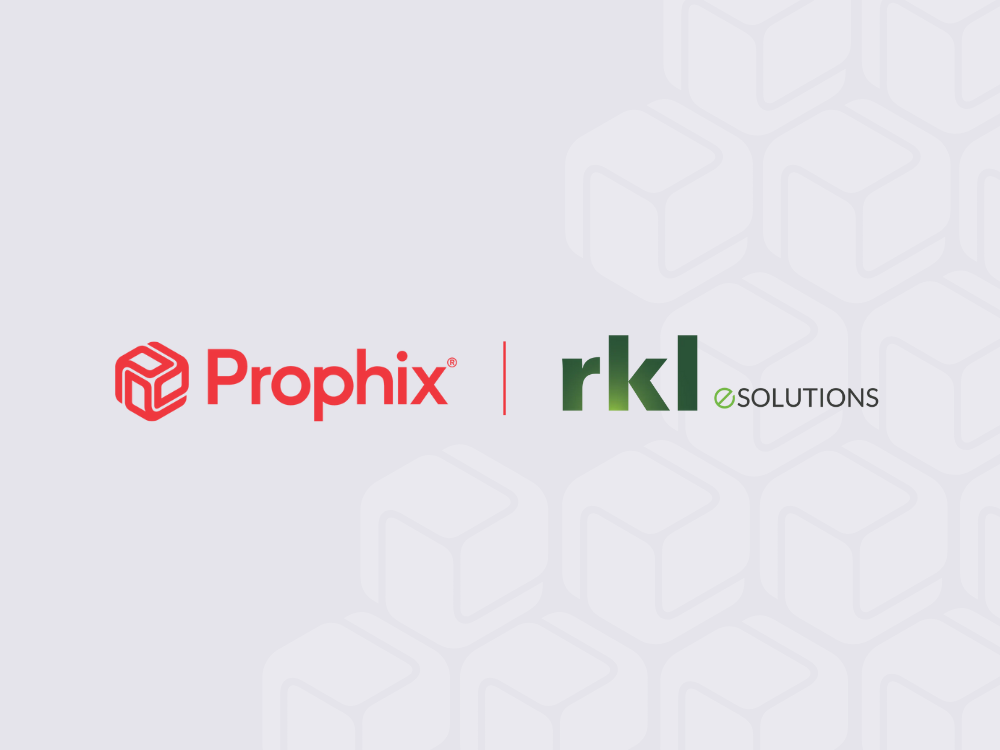Download the BPM Partners Whitepaper
The future of AI and FP&A: What CFO’s need to know today – and tomorrow
What do CFO’s need to know today – and tomorrow – when it comes to AI and FP&A?
July 10, 2025The adoption of AI in finance is accelerating at lightning speed. From automating routine tasks to uncovering deeper insights that shape strategic decisions, AI offers enormous potential.
But finance teams have questions – and rightfully so. So where are we today with AI in finance – what's the hype, what’s working? How can organizations use the power of AI responsibly? And most importantly, where is AI headed?
In a recent webinar, AI and FP&A: What it means for the future of finance, John Hagerty, Analyst at Dresner Advisory Services; Jonny Harmer, CFO at USA Properties, and Alok Ajmera, CEO at Prophix, answered these questions. You can watch the full webinar on demand at the link above or catch the highlights below.
The current state of AI in finance
AI maturity: Early days, big opportunities
Recent research from Dresner Advisory Services reveals that most finance teams are still in the ‘emerging’ stages of AI adoption – investing in pilots and experiments to understand AI’s role before making any big investments.
For finance leaders, the primary driver for investments in AI falls into two categories:
Experimentation and learning: Teams are gaining familiarity with how AI works and identifying high-potential use cases.
Solving business challenges: Many companies are prioritizing areas where AI can address specific inefficiencies.
Drivers behind AI adoption
Adoption is picking up speed. Common motivations for adopting AI include:
Talent augmentation: AI tools help finance teams manage talent shortages while enhancing existing capabilities. This includes anything from problem solving to helping grow and retain talent.
Vertical integration: The increased focus on access to and analysis of data in-house (versus managed third-party services) to work faster and smarter.
Commitment to innovation: Organizations like USA Properties see AI as a means to drive better decisions while staying true to one of their core values: a culture of innovation.
Growing accessibility
Generative AI is much more accessible with each passing day. And with the rise of AI copilots, finance teams can now streamline tasks, pose questions, and get actionable insights faster than ever before. These types of tools are democratizing AI, making it accessible to everyone in the organization – no data scientist title required.
Balancing innovation with risk
So what keeps CFO’s up at night? AI’s potential is vast – but so are the challenges that come with integrating it into the finance function.
According to John Hagerty from Dresner Advisory Services, there are five key areas that finance teams should consider when it comes to AI adoption.
Security and privacy: Ensure sensitive data stays protected.
Emerging regulations: Keep pace with rapid changes in regulatory frameworks.
Data quality and accuracy: Verify that AI outputs are reliable and accurate.
Ethics and bias: Avoid skewed decision-making driven by biased data.
Cost: Understand financial implications before, during, and while scaling AI investments.
How do you overcome these AI risks in finance? Strong governance frameworks and models are emerging as best practices to help manage security and risks. Partnering with a financial performance management vendor, like Prophix, prioritizes data security and compliance, and can offer a controlled environment for AI solutions.
The evolution of FP&A with AI
Already, AI is transforming financial planning and analysis – from automation to more autonomous processes. Three waves (for now!) of AI adoption are shaping the finance landscape:
Predictive analytics and machine learning: This is a category well underway when it comes to adoption, leveraging historical data to forecast trends.
Generative AI: While becoming more commonplace, there is still room for growth within finance teams. Generative AI simplifies complex concepts, generates narratives, and makes data more accessible for finance teams of all sizes.
Agentic AI: The next frontier that involves AI not just processing information, but reasoning, acting on it, and learning from the outcomes.
While agentic AI is still just getting started, its transformative power for finance teams is immense.
Where AI in finance is headed
Although predicting the tech landscape three to five years from now can feel impossible, keep an eye on agentic AI in the near term. The potential of agentic AI promises to help finance teams to work faster – at scale – combining the best of machine learning and generative AI capabilities.
In the near-term, here’s what you can do to start your AI journey:
Pilot high-impact use cases: Experiment with manageable AI projects where return on investment is clear – and scale from there.
Identify and empower champions: Identify curious, tech-savvy employees who can drive AI exploration and help foster broader adoption across the organization.
Adopt an iterative mindset: Accept the reality of ‘fail-fast’ moments – see them as stepping stones rather than setbacks.
The human element
If there’s one thing AI can’t replace? It’s the human touch. The deep organizational context, culture, and goals that finance professionals bring to the table is never something that AI will be able to replace. AI is built to augment work – not replace – human judgment. Using AI will help finance teams make smarter business decisions while maintaining unique business values.
What’s next for AI and FP&A
AI in finance offers immense potential. At the same time, its adoption rightfully raises questions around risk, governance, and long-term strategy. For CFO’s, the key to navigating this complexity lies in balancing innovation with diligence, while keeping human touch at the core.
Curious to learn more? Watch the full webinar featuring insights from leading industry voices, including John Hagerty, Jonny Harmer, and Alok Ajmera. Access the on-demand session now.
Insights for next-gen finance leaders
Stay ahead with actionable finance strategies, tips, news, and trends.





